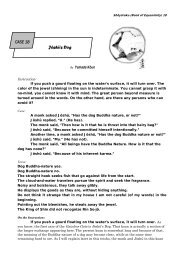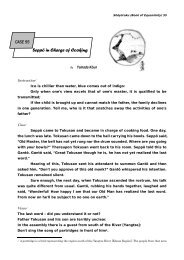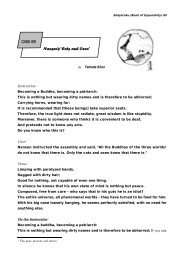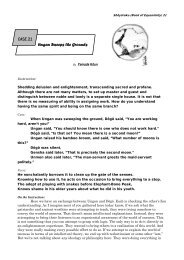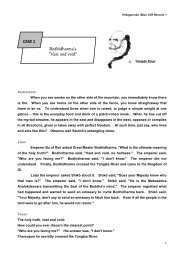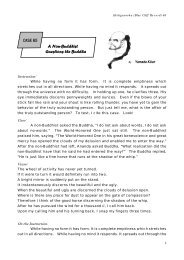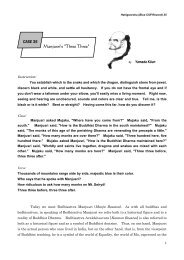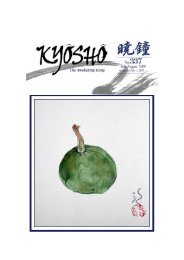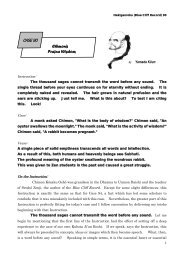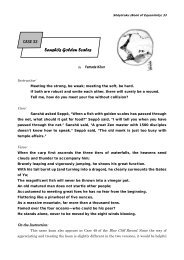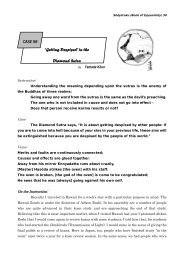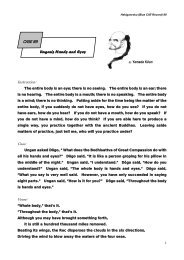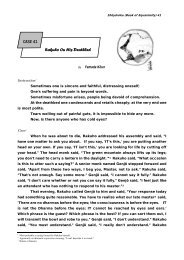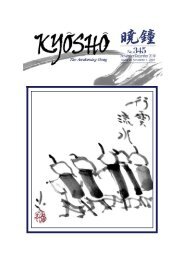English.pd
English.pd
English.pd
You also want an ePaper? Increase the reach of your titles
YUMPU automatically turns print PDFs into web optimized ePapers that Google loves.
view. However, to cling to the world of emptiness and to separate the world of<br />
phenomena form the world of emptiness is equally a one-sided view.<br />
“The world of phenomena” and “the world of emptiness” are one and the same<br />
world called by different names. Dogen was exceedingly strict on this point. Seeing<br />
phenomena and emptiness on equal terms he freely moved to and fro in their midst.<br />
Because of that, if one’s eye is not clear enough, one cannot follow Dogen in his world.<br />
Dogen does not even use the word emptiness at all. It is good to see the opening lines of<br />
the “Genjokoan” Chapter of the Shobogenzo. What we call the “world of phenomena” is<br />
referred to by Dogen as “When all things are Buddhadharma.” What we call the world<br />
of emptiness or the world of Essence is referred to by Dogen as “When myriad things are<br />
without an abiding self.” These two aspects referred to by “When” are one and the same<br />
world seen from different angles and expressed as such. It is like the difference between<br />
looking at the same teacup from above and looking at it from the side. For Dogen these<br />
two aspects are completely the same, and he went about freely from one to the other.<br />
The entire Rinzai School, beginning with Zen Master Rinzai, lacks this realization of the<br />
equality of the two aspects as well as the freedom to go to and fro in their midst. This,<br />
from Dogen’s point of view, was the cause of his dissatisfaction with them.<br />
14<br />
(translated by Maria REIS-HABITO)<br />
Picture by Katharina SHEPHERD



